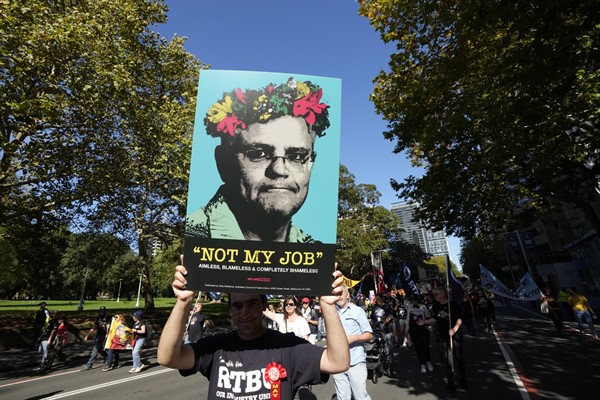Australians will head to the polls next week to elect a new government, with the prospects looking dire for the coalition of the Liberal and National parties that has been in power since 2013. During this time, internal divisions within the Liberal Party has led to Australia having had three different prime ministers. Although Prime Minister Scott Morrison has managed to make it through a full three-year term since winning the last elections in 2019, it would be a mistake to conclude that the party has overcome its constant in-fighting. In fact, this election represents the biggest existential threat the Liberal Party has faced since its founding in 1945.
Unlike their political cousins in the United Kingdom and Canada, Australia’s conservative and liberal forces fused together into a single party in response to the strength of the country’s social-democratic Labor Party. As long as the party’s conservative wing saw its role as defending liberal democracy, this alliance was complementary. However, as has been seen in other Western democracies, changes at home and abroad have started to realign interest groups in Australia, and a more reactionary form of conservatism has emerged. As a result, the Liberal Party has started to lose both its cohesion and its coherence.
The party’s own realignment is geographic as much as it is ideological. Six of its first seven leaders were from the southeastern state of Victoria, a state whose service-based economy differentiates it from other states where mining dominates, and the party’s center of gravity was the financial district along Melbourne’s Collins Street. As the party of the “moral middle class,” its wealthier members harbored a prominent sense of noblesse oblige. Yet since former Prime Minister John Howard seized control of the party in the mid-1990s, all its leaders have come from New South Wales, a larger state with competing economic interests and a bare-knuckled political culture. This has altered the party’s character away from its previous Whiggish worldview, toward a more grievance-based identarian politics, fueled by the editorial pages of Rupert Murdoch’s Sydney-based broadsheet, The Australian.

